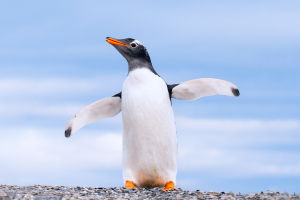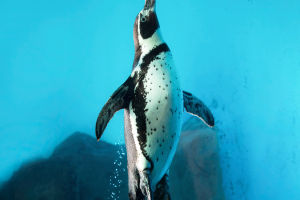Andean Condor
Hey Lykkers! Soar into the sky as we explore the life of one of nature’s most impressive aviators, the Andean Condor.
Known for its enormous wingspan and striking presence, this bird is not just a master of the air but also a cultural symbol across the Andes.
Habitat and Range
This species is predominantly found along the Andean mountain range, utilizing the thermals to soar with minimal energy expenditure. The Andean condor prefers rocky, open areas that provide the updrafts necessary for soaring. These regions often include grasslands, deserts, and alpine areas up to 5,000 meters 16,000 feet in elevation. Their nests are typically located on inaccessible rock ledges, where the female lays one to two eggs every couple of years.
Scavengers of the Skies
Condors are primarily scavengers, preferring to feast on carrion rather than hunting live prey. This dietary preference plays a crucial role in their ecosystem by helping to clean up the environment
Thermal Riders
Utilizing rising thermal currents, the Andean Condor can remain airborne for hours without a single flap of its wings. This remarkable ability showcases their incredible adaptation to the rugged terrains of the Andes.
Longevity in the Air
These birds are known for their long lifespans, often living up to 70 years in the wild. Their longevity is complemented by a slow rate of reproduction, with breeding pairs raising a single chick every couple of years.
Diet and Foraging
The Andean condor is primarily a scavenger, feeding on the carcasses of deer, and other large mammals. This diet helps to keep the environment clean and free of disease. The condor's excellent eyesight allows it to spot potential food sources from great heights, and its bald head is thought to be an adaptation for hygiene, allowing the bird to stay clean while feeding from carcasses.
Reproduction and Lifecycle
The reproductive rate of the Andean condor is remarkably low, which contributes to its vulnerable status. The birds are monogamous and may mate for life, with a breeding pair producing only a single offspring every two to three years. The chick is dependent on its parents for over a year, which necessitates significant parental investment from both the male and the female.
Conservation Status
The Andean condor is listed as Near Threatened by the International Union for Conservation of Nature (IUCN) due to habitat loss, secondary poisoning, and hunting. Conservation efforts are crucial to ensure the survival of this species, with programs focusing on habitat preservation, education, and anti-poaching measures. In some regions, condors have been successfully reintroduced into the wild, which offers hope for their future conservation.
In conclusion, the Andean condor is not just a bird but a crucial part of the Andean ecosystems and cultures. Its survival depends on ongoing conservation efforts and a better understanding of its ecological role as nature's scavenger. Preserving this majestic bird is essential not only for biodiversity but also for maintaining the cultural heritage of the Andean people.
Invite lykkers to watch this video.
The Andean condor, a symbol of power and freedom.


